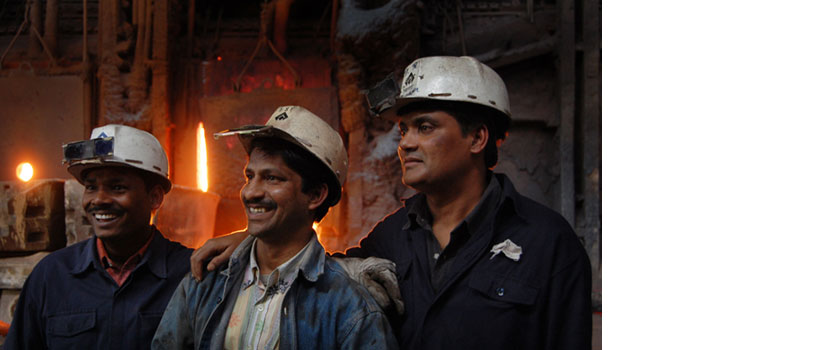Steel Authority of India Limited (SAIL) is the largest steel-making company in India and one of the seven Maharatna’s of the country’s Central Public Sector Enterprises. SAIL produces iron and steel at five integrated plants and three special steel plants, located principally in the eastern and central regions of India and situated close to domestic sources of raw materials. SAIL manufactures and sells a broad range of steel products.
Length and speed detection system for SAIL

Overview
It is apparently true that when one operates on such a large scale, they are prone to bigger issues and challenges. One such issue was troubling SAIL in their operations and that is where we got an opportunity to serve them and more importantly to showcase the skills of our talented and diligent employees.
One of the products that SAIL produces is Iron pipes of different diameters but of a specific length. They have all the facilities to make and cut pipes but the issue they were facing was that of precision. They were making losses as the equipment they had for measuring the pipe length was incapable of gaging properly. Sometimes they exceeded the required length while cutting sometimes they fell short. And for any company, it is obvious that if they do not meet their customer’s satisfaction with their product they are prone to lose their reputation. This is where we were invited to provide a robust solution to their problem.
Solution
- Representatives of our company visited the site at Rourkela, Odisha and found that the existing features for measuring the length of pipes were outdated and incapable of precision now. They required the Installation of a non-contact type device to measure the speed of pipes that will enable the exact measurement of length & speed for cutting and synchronizing with the fly cut-off carriage drive speed. The setback was not easy and neither was the elucidation. The challenge was to complete the whole work starting from design, production, testing, and implementation in just 6 months.
- We pulled up our socks and started understanding the requirements by meeting their employees, studying their drawings & documents and discussing with their consultant. We documented every single detail of the project before proceeding to the design of the assembly.
- Our team worked meticulously to bring their ideas to reality by designing the product, and it was expected that the assembly will not be easy. The sensor required to maintain a constant distance of 120 mm from the moving object, but since the moving object had to be in different diameters we designed the mount in such a way that it is easy to adjust and calibrate for the user.
- Major issues were encountered when the product was ready and we visited the site for installation. The site had space constraint and the connected devices had to be installed away from the sensor arrangement, but the most challenging work was to install everything within the working condition of the workshop. We required approvals from authorities for even every single screw we were using.
- The installation seemed much more difficult than the design and assembly at that time. But keeping the project delivery deadline as set by our team we disentangled every hindrance spot at onsite.
- We also provided an air cooling system for the device which is required for the smooth performance of the setup.
Value addition
SAIL didn’t just feel that their requirements were fulfilled but received much more than their expectations. Keeping in mind the operational behavior around the gadget in the workshop, we made our assembly shockproof so as to ensure the safety of the workers around. It was also made 3 dimensionally movable so as to adjust to the pipe’s diameter and at the same time be maintenance flexible. Also, the constraint was to measure the distance and speed of the moving object from left to right but our device was capable of measuring bi-directionally. And not just these, we also provided them with live monitoring setup of speed and distance with which they can verify the operational preciseness of the Pipes being cut. And all of these activities were done within five months, way ahead of SAIL’s target cut-off.
Exhibits

